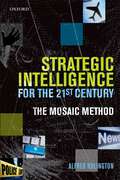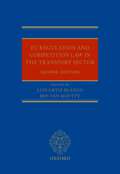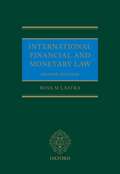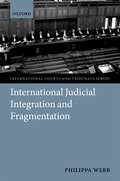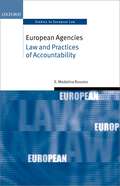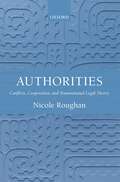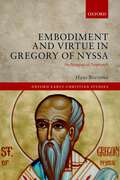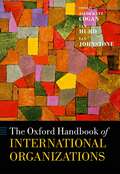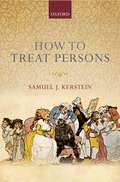- Table View
- List View
Strategic Intelligence for the 21st Century: The Mosaic Method
by Alfred RolingtonStrategic Intelligence for the 21st Century: The Mosaic Method provides an industry insider's assessment of current intelligence methods and offers a new strategic model, directed toward the police, military, and intelligence agencies. The birth of the internet, the advent of 24 hour news and the rise of social media is evidence of how governments and those dealing in intelligence commodities struggle not only to access but also to limit the information that is out there. At the same time, recent terrorist atrocities, such as 9/11 and the July 7th bombings in London, have highlighted the need for intelligence cooperation on a global scale - but how can this be achieved? Serving as a call to break from traditional models and forge more deeply and continuously inter-linked relationships, Strategic Intelligence for the 21st Century advocates more fluid, networked operating methods, incorporating far more open-sourced information and data in analysis. Featuring contributions from key figures in the industry, including Sir Colin McColl, R. James Woolsey, and Sir David Phillips, this book presents a history of intelligence developments alongside the current challenges, analysing the impact on society - both from within and due to propaganda and covert action - and the influence wrought by technological innovations. With discussion of the Deep Web, the post-9/11 era, and the resulting impact on civil liberty and police operations, Strategic Intelligence for the 21st Century offers a revolutionary new approach to intelligence analysis and global collaborations.
EU Regulation and Competition Law in the Transport Sector
EU Regulation and Competition Law in the Transport Sector provides an in-depth analysis of the EU regulation of the various transport modes, and of the EU competition rules in the transport sectior. The text gives details of different substantive rules regarding, on the one hand, liberalization and regulation of transport markets and operations; and, on the other, restrictive agreements, dominant positions, and mergers, which apply to shipping, to aviation, and to inland transport. In addition to illustrating the procedures which govern enforcement of EU competition rules,and indicating how these differ from the usual procedures applied by the European Commission, this new edition addresses the recent emergence of a regulatory framework for different transport modes. The editors and authors have all been closely involved in the development of the Commission's practice in this area and have provided a detailed contemporary discussion of all relevant issues.
EU Regulation and Competition Law in the Transport Sector
by Luis Ortiz Blanco and Ben Van HoutteEU Regulation and Competition Law in the Transport Sector provides an in-depth analysis of the EU regulation of the various transport modes, and of the EU competition rules in the transport sectior. The text gives details of different substantive rules regarding, on the one hand, liberalization and regulation of transport markets and operations; and, on the other, restrictive agreements, dominant positions, and mergers, which apply to shipping, to aviation, and to inland transport. In addition to illustrating the procedures which govern enforcement of EU competition rules,and indicating how these differ from the usual procedures applied by the European Commission, this new edition addresses the recent emergence of a regulatory framework for different transport modes. The editors and authors have all been closely involved in the development of the Commission's practice in this area and have provided a detailed contemporary discussion of all relevant issues.
International Financial and Monetary Law
by Rosa LastraThis book is a leading authority on central banking and financial regulation, including detailed legal and policy analysis of the institutions that safeguard monetary stability and financial stability nationally, at the EU level and globally. The new edition has been renamed (previously 'Legal Foundations of International Monetary Stability') to better reflect the book's breadth of coverage, which includes an in-depth study of central banking, a fresh look at supervision, regulation and crisis management after the global financial crisis. It also includes updated material on the law of the European Central Bank and banking union, the law of the IMF and work undertaken by international standard-setters, in particular the FSB and the Basel Committee. Part I focuses on national developments, Part II deals with EU developments and Part III examines international developments. Each of these sections commences with a historical chapter, then analyses the framework of the 'monetary architecture'. Finally, each part considers the 'financial architecture' with regard to the functions of financial supervision (micro and macro) and surveillance, regulation and crisis management, including lender of last resort and resolution.
International Financial and Monetary Law
by Rosa LastraThis book is a leading authority on central banking and financial regulation, including detailed legal and policy analysis of the institutions that safeguard monetary stability and financial stability nationally, at the EU level and globally. The new edition has been renamed (previously 'Legal Foundations of International Monetary Stability') to better reflect the book's breadth of coverage, which includes an in-depth study of central banking, a fresh look at supervision, regulation and crisis management after the global financial crisis. It also includes updated material on the law of the European Central Bank and banking union, the law of the IMF and work undertaken by international standard-setters, in particular the FSB and the Basel Committee. Part I focuses on national developments, Part II deals with EU developments and Part III examines international developments. Each of these sections commences with a historical chapter, then analyses the framework of the 'monetary architecture'. Finally, each part considers the 'financial architecture' with regard to the functions of financial supervision (micro and macro) and surveillance, regulation and crisis management, including lender of last resort and resolution.
Sovereign Debt Management
Sovereign debt is a complex and highly topical area of law and this work represents a new main reference book on the subject bringing together contributions from world leading practitioners, scholars and regulators. Divided into five parts the book opens with a part on restructuring which analyses contractual provisions and the role of institutions such as the International Monetary Fund. The second part, on enforcement, considers the position of a sovereign as a defendant analyzing the availability of special immunities and matters of defense and arbitration pertinent to sovereign debt. Part three of the book is concerned with complicating factors such as economic, political or banking crises and how these relate and complicate the task of addressing an unsustainable sovereign debt stock. In this section the particular and topical issues concerned with restructuring in a monetary union are explained. The fourth part provides economists' explanations of why and how sovereigns borrow and the causes of a sovereign debt, which enriches understanding by providing context to the purely legal aspects of the work. The book closes with a section which covers proposed reform to sovereign debt systems. Dedicated to the leading expert Lee Buchheit, this work contains comprehensive and rigorous analysis on sovereign debt management which no specialist should be without.
International Judicial Integration and Fragmentation (International Courts and Tribunals Series)
by Philippa WebbFragmentation is one of the major debates within international law, but no detailed case studies have been made to show the problems that it creates, and how they can be addressed. This book asks whether the growing number of international judicial bodies render decisions that are largely consistent with one another, which factors influence this (in)consistency, and what this tells us about the development of international law by international courts and tribunals. It answers these questions by focusing on three areas of law: genocide, immunities, and the use of force, as in each of these areas different international judicial entities have dealt with cases stemming from the same situation and set of facts. The work focuses on four main courts: the International Court of Justice (ICJ), the International Criminal Court (ICC), the International Criminal Tribunal for the Former Yugoslavia (ICTY), and the International Criminal Tribunal for Rwanda (ICTR), which often interpret, apply, and develop the same legal principles, despite their different mandates and functions. It argues that judicial fragmentation is damaging to the international legal system, as coherent and compatible pronouncements on the law by international courts are vital to retaining the confidence of the international community. Ultimately, the book makes a plea for the importance of judicial integration for the stability and reliability of the international legal system.
European Agencies: Law and Practices of Accountability (Oxford Studies in European Law)
by Madalina BusuiocEuropean agencies have been created at a rapid pace in recent years in a multitude of highly pertinent and sensitive fields ranging from pharmaceuticals and aviation safety to chemicals or financial supervision. This agency phenomenon shows no signs of relenting, and the trend in recent years is towards the delegation of ever-broader powers. These bodies, meant to operate at arm's length from political control, have real power and their opinions and decisions can have a direct impact on individuals, regulators, and member states. Given the powers wielded by the agencies, who is responsible for holding these non-majoritarian actors to account? Is the growing concern surrounding agency accountability 'much ado about nothing' or are we faced with the threat of a powerful and unaccountable bureaucracy? These are precisely the questions that this book seeks to answer. It thus addresses one of the most relevant topics in current European governance: the accountability of European agencies. Scholars have increasingly called attention to the risk of placing too much power in the hands of such agencies, which operate at arm's length from traditional controls and cannot easily be held accountable for their actions. Although this is a major issue of concern, systematic empirical research into the topic is lacking. This book addresses empirically whether, and if so on what counts, agency accountability is problematic. It examines how the accountability system of European agencies operates at both the de jure as well as the de facto level, through an examination of legal provisions, relevant case law as well as policy documents and extensive interview material. Reflecting on these findings, the book also offers important theoretical insights for our understanding and study of accountability in a complex regulatory regime such as the EU context. The book follows a multi-disciplinary approach and is at the cutting edge of law and public administration.
The Concept of the Rule of Law and the European Court of Human Rights
by Geranne LautenbachThis book analyses the concept of the rule of law in the context of international law, through the case law of the European Court of Human Rights. It investigates how the court has defined and interpreted the notion of the rule of law in its jurisprudence. It places this analysis against a background of more theoretical accounts of the idea of the rule of law, drawing in ideas of political philosophy. It also provides a comparative assessment, demonstrating how the idea of the rule of law has evolved in the UK, France, and Germany. The book argues that at the core of the concept of the rule of law are the notions of legality and judicial safeguards. It states that the Court has developed the requirements of legality, which the work analyses in detail, based on that concept. It assesses the independence of the judiciary as an aspect of the rule of law in the context of the European Convention on Human Rights, and the relationship between the rule of law and the substantive contents of law. The book posits that the rule of law as seen at the Court is not mainly utilised with regard to 'freedom' rights, but is more concerned with procedural rights. It discusses the relationship between the rule of law and the view of the Convention as a constitutional instrument of the European public order, and shows that the rule of law and democracy are inextricably linked in the case law of the Court. Ultimately, the book demonstrates in its analysis of the Court's jurisprudence that the notion of the rule of law is a crucial part of the international legal order.
Authorities: Conflicts, Cooperation, and Transnational Legal Theory
by Nicole RoughanInteractions between state, international, transnational, and intra-state law involve overlapping, and sometimes conflicting, claims to legitimate authority. This has led scholars to new theoretical explanations of sovereignty, constitutionalism, and legality, but there has been little treatment of authority itself. This book asks whether, and under what conditions, there can be multiple legitimate authorities with overlapping or conflicting domains. Can legitimate authority be shared between state, supra-state, and non-state actors, and if so, how should they relate to one another? Roughan argues that understanding authority in contemporary pluralist circumstances requires a new conception of relative authority, and a new theory of its legitimacy. The theory of relative authority treats the interdependence of authorities, and the relationships in which they are engaged, as critical to any assessment of their legitimacy. It offers a tool for evaluating inter-authority relationships prevalent in international, transnational, state, and non-state constitutional practice, while suggesting significant revisions to the idea that law, in general or even by necessity, claims to have legitimate authority.
Embodiment And Virtue In Gregory Of Nyssa: An Anagogical Approach (Oxford Early Christian Studies)
by Hans BoersmaEmbodiment in the theology of Gregory of Nyssa is a much-debated topic. Hans Boersma argues that this-worldly realities of time and space, which include embodiment, are not the focus of Gregory's theology. Instead, embodiment plays a distinctly subordinate role. The key to his theology, Boersma suggests, is anagogy, going upward in order to participate in the life of God. This book looks at a variety of topics connected to embodiment in Gregory's thought: time and space; allegory; gender, sexuality, and virginity; death and mourning; slavery, homelessness, and poverty; and the church as the body of Christ. In each instance, Boersma maintains, Gregory values embodiment only inasmuch as it enables us to go upward in the intellectual realm of the heavenly future. Boersma suggests that for Gregory embodiment and virtue serve the anagogical pursuit of otherworldly realities. Countering recent trends in scholarship that highlight Gregory's appreciation of the goodness of creation, this book argues that Gregory looks at embodiment as a means for human beings to grow in virtue and so to participate in the divine life. It is true that, as a Christian thinker, Gregory regards the creator-creature distinction as basic. But he also works with the distinction between spirit and matter. And Nyssen is convinced that in the hereafter the categories of time and space will disappear-while the human body will undergo an inconceivable transformation. This book, then, serves as a reminder of the profoundly otherworldly cast of Gregory's theology.
Law and Gender (Clarendon Law Series)
by Joanne ConaghanGender is an increasingly prominent aspect of the contemporary debate and discourse around law. It is curious that gender, while figuring so centrally in the construction and organization of social life, is nevertheless barely visible in the conceptual armoury of law. In the jurisprudential imagination law is gender-less; as a result legal scholarship for the most part continues to hold on to the view that gender plays little or no role in the conceptual make-up, normative grounding, or categorical ordering of law. The official position is that the idea of law and legal fundamentals are, or at least ought to be, gender-independent. This book challenges these long-held assumptions. Exploring the relationship between law and gender it takes gender as a core concept and analytical tool and examines how law is conceptualized, organized, articulated, and legitimated. How can gender be given meaning in legal texts, doctrine, and practices, and how can gender operate within the law while simultaneously appearing to be outside it? The relationship between gender and the law is relevant to virtually all areas of law including in particular criminal law, tort law, family law, employment law, and human rights. Increasingly issues of gender are perceived as the concern of all, reflecting broader debates in the law, including those of equality and sexuality. Covering the key theoretical and substantive areas of jurisprudence, this volume by Joanne Conaghan will be essential reading for all interested in gender studies and legal theory more widely. It offers a clear, concise introduction to gender studies and central feminist concerns for a legal readership.
From Empire to Union: Conceptions of German Constitutional Law since 1871
by Jo Eric MurkensGermany has long been at the centre of European debates surrounding the modern role of national constitutional law and its relationship with EU law. In 2009 the German constitutional court voted to uphold the constitutionality of the Lisbon Treaty, but its critical, restrictive decision sent shockwaves through the European legal community who saw potential threats to further European integration. What explains Germany's uneasy relationship with the project of European legal integration? How have the concepts of sovereignty, state, people, and democracy come to dominate the Constitutional Court's thinking, despite not being defined in the Constitution itself? Despite its importance to the whole enterprise of the European Union, German constitutional thought has been poorly understood in the wider European literature. This book presents a historical account of German conceptions of constitutional law, providing the understanding necessary to see what is at stake in contemporary debates surrounding the constitution and the European Union. Examining the modern development of German constitutional thought, this volume traces the key public law concepts of state, constitution, sovereignty, and democracy from their modern emergence in the 19th century through to the present day. It analyses the constitutional relationship between Germany and the EU from a sociological and historical perspective, looking at how German constitutional law has conflicted and compromised with EU law, and the difficulties this has raised. Filling a significant gap in comparative constitutional law literature, this book provides an account of the major schools of German constitutional thought and their development. Against this backdrop it offers a fascinating insight into Germany's relationship with the European Union.
The Oxford Handbook of International Organizations (Oxford Handbooks)
Virtually every important question of public policy today involves an international organization. From trade to intellectual property to health policy and beyond, governments interact with international organizations in almost everything they do. Increasingly, individual citizens are directly affected by the work of international organizations. Aimed at academics, students, practitioners, and lawyers, this book gives a comprehensive overview of the world of international organizations today. It emphasizes both the practical aspects of their organization and operation, and the conceptual issues that arise at the junctures between nation-states and international authority, and between law and politics. While the focus is on inter-governmental organizations, the book also encompasses non-governmental organizations and public policy networks. With essays by the leading scholars and practitioners, the book first considers the main international organizations and the kinds of problems they address. This includes chapters on the organizations that relate to trade, humanitarian aid, peace operations, and more, as well as chapters on the history of international organizations. The book then looks at the constituent parts and internal functioning of international organizations. This addresses the internal management of the organization, and includes chapters on the distribution of decision-making power within the organizations, the structure of their assemblies, the role of Secretaries-General and other heads, budgets and finance, and other elements of complex bureaucracies at the international level. This book is essential reading for scholars, practitioners, and students alike.
The Oxford Handbook of International Organizations (Oxford Handbooks)
by Jacob Katz Cogan, Ian Hurd and Ian JohnstoneVirtually every important question of public policy today involves an international organization. From trade to intellectual property to health policy and beyond, governments interact with international organizations in almost everything they do. Increasingly, individual citizens are directly affected by the work of international organizations. Aimed at academics, students, practitioners, and lawyers, this book gives a comprehensive overview of the world of international organizations today. It emphasizes both the practical aspects of their organization and operation, and the conceptual issues that arise at the junctures between nation-states and international authority, and between law and politics. While the focus is on inter-governmental organizations, the book also encompasses non-governmental organizations and public policy networks. With essays by the leading scholars and practitioners, the book first considers the main international organizations and the kinds of problems they address. This includes chapters on the organizations that relate to trade, humanitarian aid, peace operations, and more, as well as chapters on the history of international organizations. The book then looks at the constituent parts and internal functioning of international organizations. This addresses the internal management of the organization, and includes chapters on the distribution of decision-making power within the organizations, the structure of their assemblies, the role of Secretaries-General and other heads, budgets and finance, and other elements of complex bureaucracies at the international level. This book is essential reading for scholars, practitioners, and students alike.
How To Treat Persons
by Samuel J. KersteinSamuel J. Kerstein develops a new, broadly Kantian account of the ethical issues that arise when a person treats another merely as a means, that is, 'just uses' the other and thereby acts wrongly. He takes his inspiration from Immanuel Kant's 'Formula of Humanity', which commands that we treat persons never merely as means but always as ends in themselves, and then develops the ideas suggested by the Formula into clear moral principles. Kerstein questions the plausibility of an orthodox Kantian account of the dignity of persons, before going on to develop a new, detailed account of his own. Kerstein's second main goal is to show how the Kantian principles he develops shed light on pressing issues in bioethics. He investigates how, morally speaking, scarce resources such as flu vaccine ought to be distributed—and he argues that allocating such resources in order to maximize benefits can be inconsistent with respecting persons' dignity. The book explores the morality of regulated markets in organs, and contends that in many contexts, buying organs from live 'donors' fails to honour their dignity. Finally, it probes the ethics of conducting research on 'anonymized' biological samples, and of conducting placebo-controlled pharmaceutical trials in developing countries. How to Treat Persons champions the view that even if an agent gets another's voluntary, informed consent to use parts of his body for transplantation or medical research, she might nevertheless be treating him merely as a means or failing to respect his dignity.
Where Our Protection Lies: Separation of Powers and Constitutional Review
by Dimitrios KyritsisIn this book Dimitrios Kyritsis advances an original account of constitutional review of primary legislation for its compatibility with human rights. Key to it is the value of separation of powers. When the relationship between courts and the legislature realizes this value, it makes a stronger claim to moral legitimacy. Kyritsis steers a path between the two extremes of the sceptics and the enthusiasts. Against sceptics who claim that constitutional review is an affront to democracy he argues that it is a morally legitimate institutional option for democratic societies because it can provide an effective check on the legislature. Although the latter represents the people and should thus be given the initiative in designing government policy, it carries serious risks, which institutional design must seek to avert. Against enthusiasts he maintains that fundamental rights protection is not the exclusive province of courts but the responsibility of both the judiciary and the legislature. Although courts may sometimes be given the power to scrutinize legislation and even strike it down, if it violates human rights, they must also respect the legislature's important contribution to their joint project. Occasionally, they may even have a duty to defer to morally sub-optimal decisions, as far as rights protection is concerned. This is as it should be. Legitimacy demands less than the ideal. In turn, citizens ought to accept discounts on perfect justice for the sake of achieving a reasonably just and effective political order overall.
Where Our Protection Lies: Separation of Powers and Constitutional Review
by Dimitrios KyritsisIn this book Dimitrios Kyritsis advances an original account of constitutional review of primary legislation for its compatibility with human rights. Key to it is the value of separation of powers. When the relationship between courts and the legislature realizes this value, it makes a stronger claim to moral legitimacy. Kyritsis steers a path between the two extremes of the sceptics and the enthusiasts. Against sceptics who claim that constitutional review is an affront to democracy he argues that it is a morally legitimate institutional option for democratic societies because it can provide an effective check on the legislature. Although the latter represents the people and should thus be given the initiative in designing government policy, it carries serious risks, which institutional design must seek to avert. Against enthusiasts he maintains that fundamental rights protection is not the exclusive province of courts but the responsibility of both the judiciary and the legislature. Although courts may sometimes be given the power to scrutinize legislation and even strike it down, if it violates human rights, they must also respect the legislature's important contribution to their joint project. Occasionally, they may even have a duty to defer to morally sub-optimal decisions, as far as rights protection is concerned. This is as it should be. Legitimacy demands less than the ideal. In turn, citizens ought to accept discounts on perfect justice for the sake of achieving a reasonably just and effective political order overall.
European Tort Law
by Cees Van DamThe new edition of European Tort Law provides an extensive revision and update of the only English language handbook in this constantly evolving area. The coverage in the new edition has been expanded with material on the latest developments in legislation, legal literature, and the case law of the European Court of Human Rights, the Court of Justice of the European Union, and the highest courts in France, Germany, and England. The first part of the book, Systems of Liability, provides chapters on the state of tort law in France, Germany, and England, and the European Union. A concluding chapter gives an overall view of the European field, linking the variety of rules with cultural diversity, examining the consequences for European harmonization, and emphasizing the importance of a European policy discourse. The second part, Requirements for Liability, analyses and compares the classic requirements for liability in a comparative and supranational perspective: rights and protected interests, intention and negligence, breach of statutory duty, stricter rules of liability, causation, damage, damages, and contributory negligence. It also discusses the role of tort law in protecting human rights against violations by the state and by multinational corporations. The final part, Categories of Liability, assesses how national and supranational rules are applied in a number of categories, such as in liability for motor vehicles, defective products, and defective premises, in liability for children, employees, and subsidiaries, as well as in cases of nuisance, environmental liability, and liability of public bodies.
The Law of Pension Trusts
by David PollardThis work on the law of pension trusts comprehensively fills a gap in the provision of good commentary on pensions law, both from a practical and scholarly perspective. Responding to a paucity of up-to-date publications in this area, David Pollard provides the most detailed treatment available of trust law as it relates to occupational pension schemes. The book provides answers to difficult problems in pensions law often not covered by statute, including trustees' obligations to employers, how spouses and dependents rank as beneficiaries and implied duties owed by employers. Pollard deals with the issues of most concern to practitioners in pensions law, including trustees' investment and amendment powers, and trustee investment duties. This practical guidance is supported and enhanced by incisive academic analysis. Written by a leading pensions practitioner, this book is a must have for all practitioners and scholars in the field.
Cyber Operations and the Use of Force in International Law
by Marco RosciniThe internet has changed the rules of many industries, and war is no exception. But can a computer virus be classed as an act of war? Does a Denial of Service attack count as an armed attack? And does a state have a right to self-defence when cyber attacked? With the range and sophistication of cyber attacks against states showing a dramatic increase in recent times, this book investigates the traditional concepts of 'use of force', 'armed attack', and 'armed conflict' and asks whether existing laws created for analogue technologies can be applied to new digital developments. The book provides a comprehensive analysis of primary documents and surrounding literature, to investigate whether and how existing rules on the use of force in international law apply to a relatively new phenomenon such as cyberspace operations. It assesses the rules of jus ad bellum and jus in bello, whether based on treaty or custom, and analyses why each rule applies or does not apply to cyber operations. Those rules which can be seen to apply are then discussed in the context of each specific type of cyber operation. The book addresses the key questions of whether a cyber operation amounts to the use of force and, if so, whether the victim state can exercise its right of self-defence; whether cyber operations trigger the application of international humanitarian law when they are not accompanied by traditional hostilities; what rules must be followed in the conduct of cyber hostilities; how neutrality is affected by cyber operations; whether those conducting cyber operations are combatants, civilians, or civilians taking direct part in hostilities. The book is essential reading for everyone wanting a better understanding of how international law regulates cyber combat.
The European Court of Justice and International Courts (International Courts and Tribunals Series)
by Tobias LockThe Court of Justice of the European Union has exclusive jurisdiction over European Union law and holds a broad interpretation of these powers. This, however, may come into conflict with the jurisdiction of other international courts and tribunals, especially in the context of so-called mixed agreements. While the CJEU considers these 'integral parts' of EU law, other international courts will also have jurisdiction in such cases. This book explores the conundrum of shared jurisdiction, analysing the international legal framework for the resolution of such conflicts, and provides a critical and comprehensive analysis of the CJEU's far-reaching jurisdiction, suggesting solutions to this dilemma. The book also addresses the special relationship between the CJEU and the European Court of Human Rights. The unique interaction between these two bodies raises fundamental substantive concerns about overlaps of jurisdiction and interpretation in the courts. Conflicts of interpretation manage largely to be avoided by frequent cross-referencing, which also allows for much cross-fertilization in the development of European human rights law. The link between these two courts is the subject of the final section of the book.
The European Court of Justice and International Courts (International Courts and Tribunals Series)
by Tobias LockThe Court of Justice of the European Union has exclusive jurisdiction over European Union law and holds a broad interpretation of these powers. This, however, may come into conflict with the jurisdiction of other international courts and tribunals, especially in the context of so-called mixed agreements. While the CJEU considers these 'integral parts' of EU law, other international courts will also have jurisdiction in such cases. This book explores the conundrum of shared jurisdiction, analysing the international legal framework for the resolution of such conflicts, and provides a critical and comprehensive analysis of the CJEU's far-reaching jurisdiction, suggesting solutions to this dilemma. The book also addresses the special relationship between the CJEU and the European Court of Human Rights. The unique interaction between these two bodies raises fundamental substantive concerns about overlaps of jurisdiction and interpretation in the courts. Conflicts of interpretation manage largely to be avoided by frequent cross-referencing, which also allows for much cross-fertilization in the development of European human rights law. The link between these two courts is the subject of the final section of the book.
The Oxford Handbook of European Union Law (Oxford Handbooks)
Since its formation the European Union has expanded beyond all expectations, and this expansion seems set to continue as more countries seek accession and the scope of EU law expands, touching more and more aspects of its citizens' lives. The EU has never been stronger and yet it now appears to be reaching a crisis point, beset on all sides by conflict and challenges to its legitimacy. Nationalist sentiment is on the rise and the Eurozone crisis has had a deep and lasting impact. EU law, always controversial, continues to perplex, not least because it remains difficult to analyse. What is the EU? An international organization, or a federation? Should its legal concepts be measured against national standards, or another norm? The Oxford Handbook of European Union Law illuminates the richness and complexity of the debates surrounding the law and policies of the EU. Comprising eight sections, it examines how we are to conceptualize EU law; the architecture of EU law; making and administering EU law; the economic constitution and the citizen; regulation of the market place; economic, monetary, and fiscal union; the Area of Freedom, Security, and Justice; and what lies beyond the regulatory state. Each chapter summarizes, analyses, and reflects on the state of play in a given area, and suggests how it is likely to develop in the foreseeable future. Written by an international team of leading commentators, this Oxford Handbook creates a vivid and provocative tapestry of the key issues shaping the laws of the European Union.
The Oxford Handbook of European Union Law (Oxford Handbooks)
by Anthony Arnull and Damian ChalmersSince its formation the European Union has expanded beyond all expectations, and this expansion seems set to continue as more countries seek accession and the scope of EU law expands, touching more and more aspects of its citizens' lives. The EU has never been stronger and yet it now appears to be reaching a crisis point, beset on all sides by conflict and challenges to its legitimacy. Nationalist sentiment is on the rise and the Eurozone crisis has had a deep and lasting impact. EU law, always controversial, continues to perplex, not least because it remains difficult to analyse. What is the EU? An international organization, or a federation? Should its legal concepts be measured against national standards, or another norm? The Oxford Handbook of European Union Law illuminates the richness and complexity of the debates surrounding the law and policies of the EU. Comprising eight sections, it examines how we are to conceptualize EU law; the architecture of EU law; making and administering EU law; the economic constitution and the citizen; regulation of the market place; economic, monetary, and fiscal union; the Area of Freedom, Security, and Justice; and what lies beyond the regulatory state. Each chapter summarizes, analyses, and reflects on the state of play in a given area, and suggests how it is likely to develop in the foreseeable future. Written by an international team of leading commentators, this Oxford Handbook creates a vivid and provocative tapestry of the key issues shaping the laws of the European Union.
